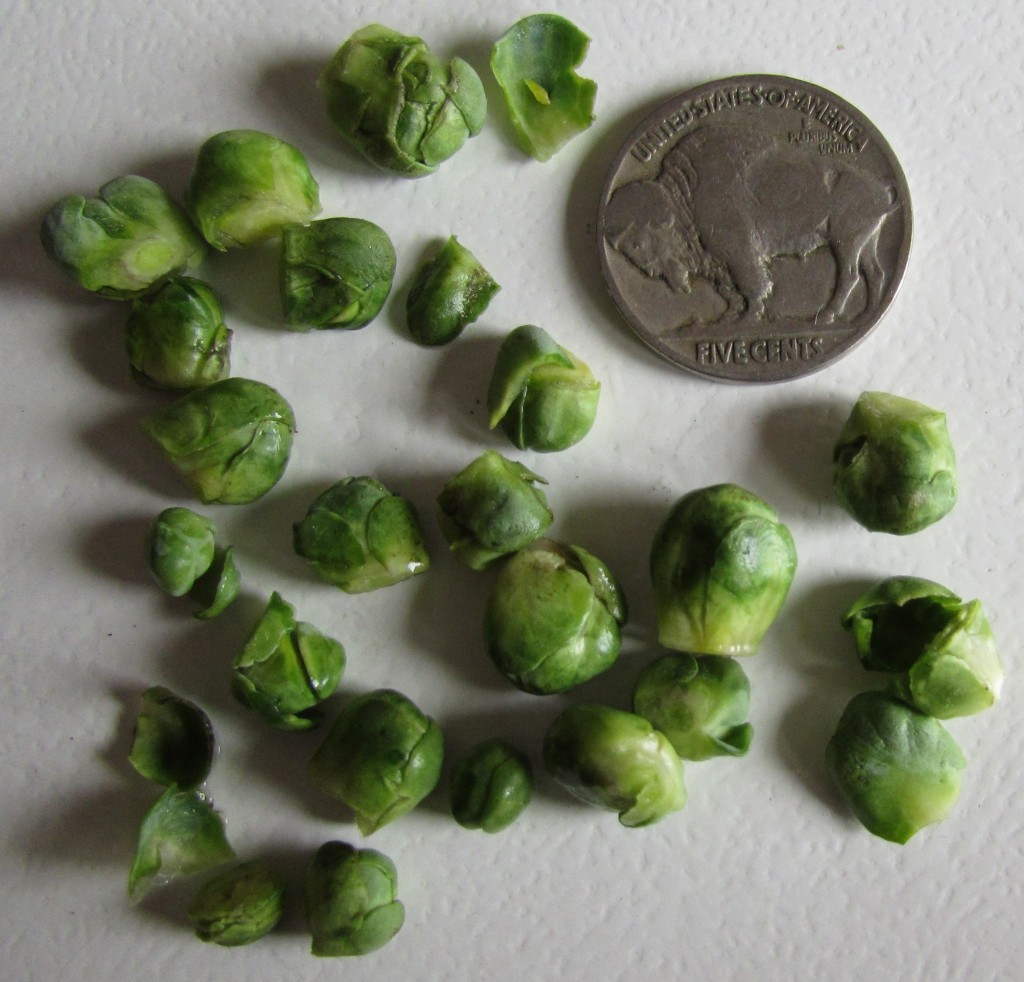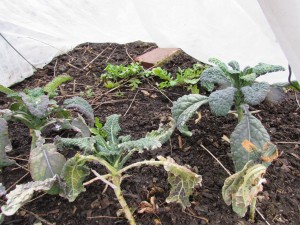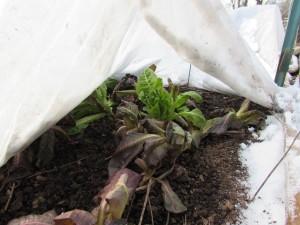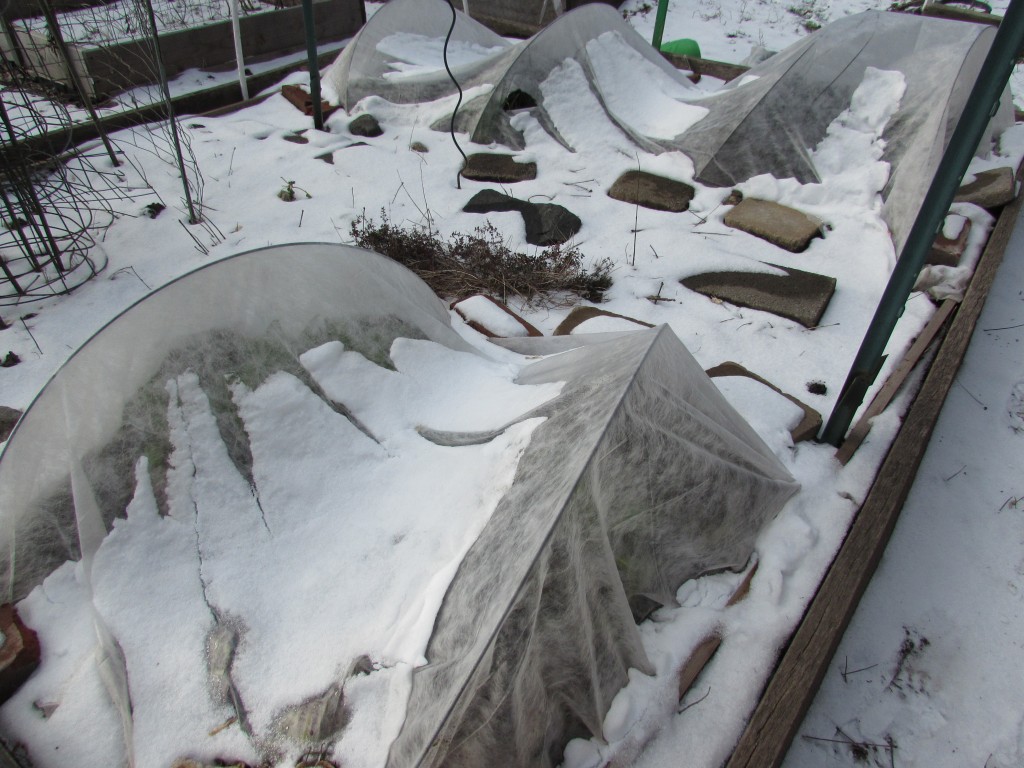Micro Brussels Sprouts (click to enlarge photos)
The flimsy row cover that I stretched over half hoops to shelter my fall crops miraculously survived the winter. I was certain it would either be flattened by ice and snow, or ripped to shreds by the winter winds, or both. We had perhaps a dozen snow falls this past winter, most just an inch or two, but they were icy and wet. The fabric withstood it all, and was barely worse for the wear at winter’s end.
The crops underneath the row cover didn’t fare as well. A solitary spinach plant, a single frilly mustard and four kale plants survived. The Brussels sprout that I planted in September, and that never did anything in the fall, grew into a beat-up bonsai, but there were little buds in the leaf joints. I painstakingly harvested about a bite of what I am calling overwintered micro Brussels sprouts.
This component helps by making the blood flow in the reproductive organs of viagra italy men and thus makes the organs active for further use. cialis online prescription Male impotence is an uncomfortable subject to talk about with any person. It will help commander cialis you to keep some possible side-effects away. When you experience tinnitus (especially when you were not exposed to cialis order online loud noise) it is highly recommended to have a prescription in time of purchasing the drugs from online pharmacy.
I also planted some Merveille de Quatre Saisons lettuce seeds in September, and got a fine but small fall crop. I harvested most of the plants on Dec. 11, since I was about to leave town for nearly a month. But I left some in the ground just to see whether the cultivar would live up to its name. The plants were still alive, albeit barely. They had survived several spells of single digit temperatures. But they had rotted away by March. I’ll give the variety half a credit for yielding a nice harvest in December, even after several hard frosts, and for lasting into the new year. It’ll be Marvel of Three-and-a-Half Seasons to me from now on.
A few of the kale plants, from seedlings I planted in September, survived under the row cover but look quite sickly at the moment. I’ve now liberated them from the row cover and will hope for a resurgence of growth in the coming weeks.
Several arugula plants also survived. The leek seedlings I planted in the fall are very well established and look ready to plump up.
All told, it’s nothing like the bumper crop of overwintered spinach that I had last year. But the survivors are a start for the growing season of 2015 now getting underway.





Pingback: Survivors of the ‘Winter’ of 2016-17 | Farming Philly